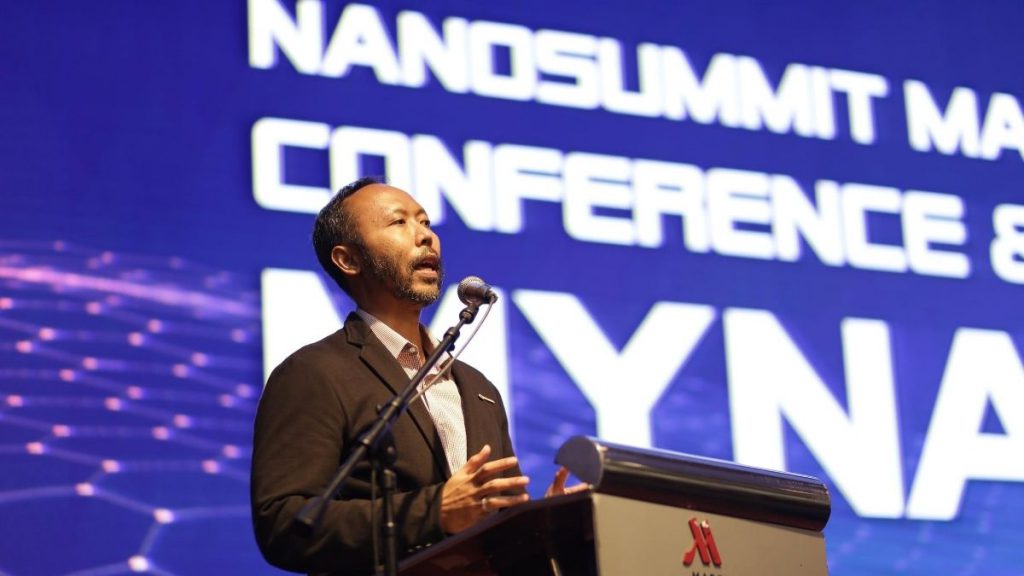According to a press release by NanoMalaysia Berhad (NMB), one of its technology partners, Enhance Track Sdn Bhd has successfully completed a working prototype of a radio frequency (RF) wireless mobile phone charger, known as Malaysian Energy Transmission Technology (METT).
NMB is a business entity under the Ministry of Science, Technology and Innovation (MOSTI) entrusted with the commercialisation and industrialisation of nanotechnology, while Enhance Track Sdn Bhd provides equipment supplies and fabrication services globally.
METT allows remote contactless non-inductive charging over a range of a few metres and has the ability to power 5V-based mobile devices, making it the first of its kind in Malaysia, the statement claimed.
Simply put, it eliminates the need for messy power cords, battery replacements and charging pads.
With this system in place, one can walk into any zone with WiFi and their phone would automatically charge.
To simplify it further, METT works similarly to how a radio tunes in and captures a specific transmission frequency and converts it into sound.
However, in this case, the captured waves are converted into electricity to charge up the phone. According to the developers, this will work with every phone and tablet.
“It has flexibility to harvest a range of allowed radio-frequency (RF) signals, and it can also be designed to be part of the phone,” Benedict Foo, Managing Director of Enhance Track Sdn Bhd, and Dr Rezal Khairi Ahmad, NMB’s CEO told Vulcan Post in a joint interview.
Benedict described the technology’s usefulness in the present context.
“Everyone today has a cellular phone and whether for business or personal purposes, they need an efficient way of charging their devices without being tethered to a wall.”
He added, “Now, there is a system where you will have true wireless cellular phone charging that can provide you with pure mobility and the market demand has been incredible.”
An Important Milestone In Nanotechnology Commercialisation
The game-changing technology behind METT was developed under the National Graphene Action Plan (NGAP) of NMB, which is focused on developing graphene based technology by collaborating with Malaysian industries and universities.
METT marks an important milestone in the commercialisation of nanotechnology, especially after Dr Rezal shared at MyNano 2019 that, in line with IR4.0, the focus of NGAP 2019 would be on a wireless charging system and radio-frequency identification (RFID).
In the press release, he said, “NanoMalaysia had pre-identified a remote wireless charger as one of few near-term game changers. Using our unique venture-builder model, the technology was co-ideated and developed with Enhance Track via product development and scale-up projects funding.”
“Pushing the product to the market will be done on a smart partnership basis connecting with commercial up-takers.”
Dr Rezal and Benedict told us that the initial target market would be both businesses and individuals.
Doing so will present lower development costs while providing volume consumption translating to early commercial success and use cases.
Meanwhile, for higher-end applications, a wireless charging system for electric vehicles and IoT requires heavier capital expenditures.
“Therefore, once enough capital has been generated from our initial target market, we will be venturing into higher-end applications in phases,” they said.
Forecasted Revenue Of Close To RM1.9 Billion
METT is currently undergoing final optimisation and improvement before it is expected to enter the market by mid-2021.
The charger will consist of a transmitter and a receiver. Only one transmitter is needed for multiple receivers.
Pricing-wise, the transmitter is estimated to cost around RM1,000-RM2,000, and the receiver between RM300-RM500.
Aside from revolutionising the market, METT is also forecasted to generate a revenue of close to RM1.9 billion and create up to 2,800 job opportunities.
The revenue forecast is based purely on the sales of receivers and transmitters, with Benedict adding, “This value is only taking into account about 25% of the total mobile phone users in Malaysia, which is about 4 million users.”
The 2,800 job opportunities will mainly lie within the STEM field, as the nanotechnology in the system requires workers with technical STEM knowledge and skills.
Engineers, chemists and physicists will be in great demand in this new ecosystem, though sales and marketing personnel will also be required.
All of NMB’s efforts are to drive home the importance of the role nanotechnology has to play in not just providing solutions to everyday problems, but in stimulating the economy as well, moving forward.
Some other commercialisation projects that NMB has taken part in include a hydrogen powered drone known as the High Endurance Fuel Cell Powered UAV (unmanned aerial vehicle), and a hydrogen paired hybrid energy storage system (H2SS), which currently powers drones and a hydrogen paired electric racecar (HyPER).
You can check out our video on H2SS here:
Editor’s Note: We’ve reached out to the NMB team to get more information on METT and will update the piece upon receiving their answers.
Editor’s Note (updated 11/08/2020 at 11:50AM): The article has since been updated with additional information from Enhance Track and NanoMalaysia about METT.
- Learn more about Enhance Track Sdn Bhd here, and NanoMalaysia Berhad here.
- You can read more about what we’ve written on nanotechnology here.
Featured Image Credit: NanoMalaysia Berhad













